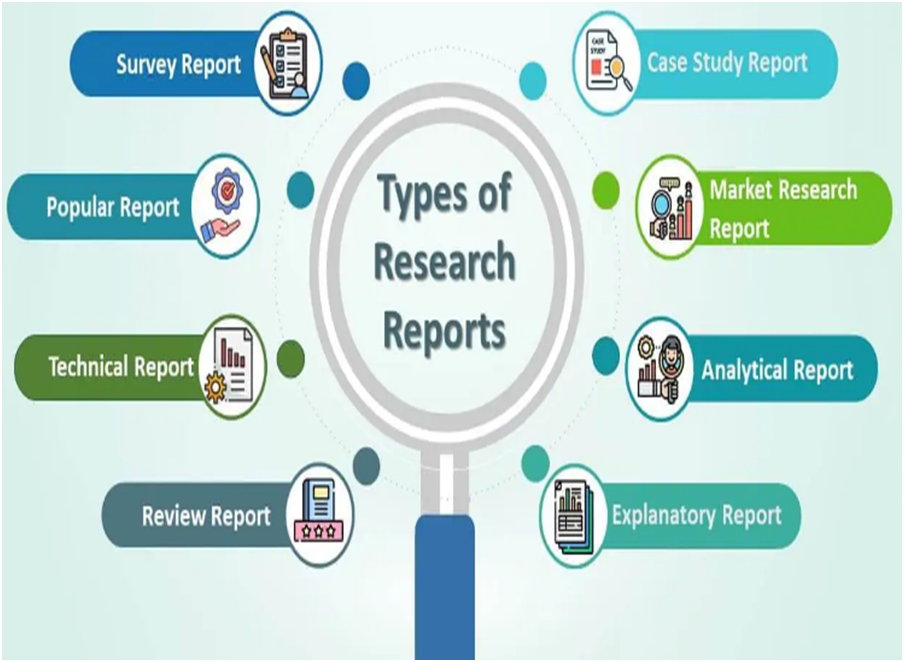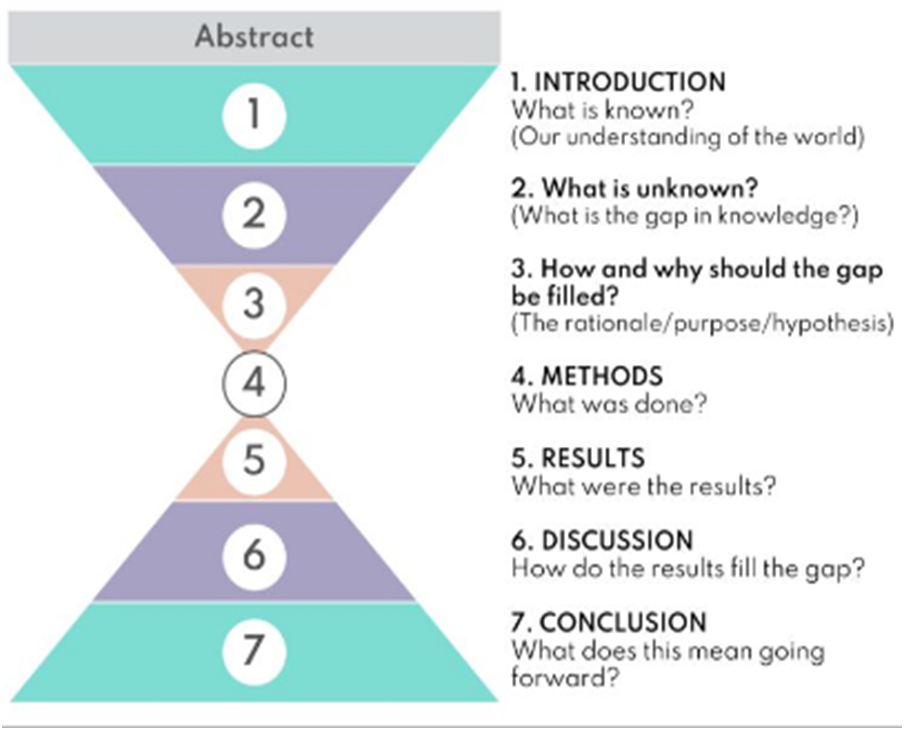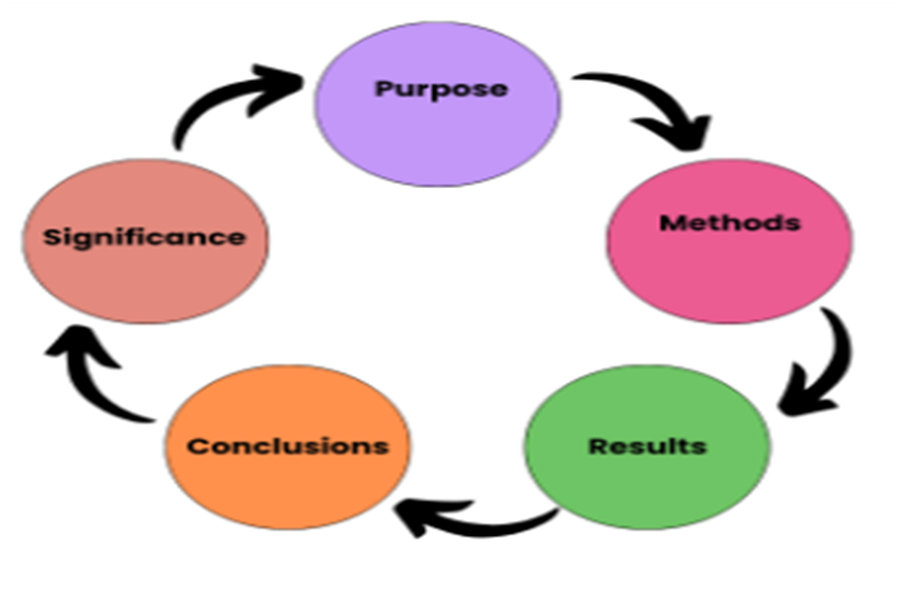Report Writing in Research Methodology
Objectives of the Lecture
- Understand the Purpose of a research report and its significance in communicating research findings.
- Identify and Explain the essential components of a well-structured research report, including the introduction, literature review, methodology, results, and conclusion.
- Apply Proper Writing Techniques, including academic language, clarity, and consistency in formatting, to enhance the quality of their reports.
-Recognize Common Mistakes and learn best practices to avoid errors, ensuring a polished and professional final report.
Outline of the Lecture
1) What is report writing in research?
Why is report writing important in academic and professional research?
2) Types of Reports
3) Structure of a Research Report
Introduction
Crafting a research report is a fundamental skill for every researcher, as it enables you to present your findings clearly and make a meaningful contribution to the scholarly knowledge within your discipline. Whether you are a student engaged in an academic research project or a professional conducting specialized studies in your field, the capability to write a coherent and comprehensive research report is vital. This part of the lecture will delve into the essential aspects of writing a research report, covering its core structure, appropriate language use, and the necessary formatting conventions. Additionally, we will discuss strategies for organizing content effectively and ensuring clarity and precision in your writing, which are key to producing a high-quality report.
1. Report Writing
A research report is a document designed to present the results of a study or investigation. Its main purpose is to share the research findings, conclusions, and potential implications with a specific audience. It aims to provide a thorough and objective summary of the research process, including the methodology and outcomes.
1.2 Characteristics of a Research Report
When conducting research, one of the most crucial stages is effectively communicating the findings, and this is where the research report plays a vital role. A research report is a structured document that presents the methodology, results, and conclusions of a research study. It serves as a detailed account of the research process, providing valuable insights for scholars, practitioners, and the wider academic community. Understanding the key characteristics of a research report is essential for producing a clear, concise, and credible document. These characteristics not only enhance the reliability of the research but also ensure that the report fulfills its primary objective: to contribute meaningful knowledge and foster informed decision-making. This essay delves into the fundamental features of a research report, exploring how aspects such as structure, objectivity, clarity, and accuracy are integral to its effectiveness.

The figure illustrates essential characteristics of a well-written research report. Let’s go through each characteristic for a clearer understanding:
1. Clarity in Information
The report should present information in a straightforward and unambiguous manner, making it easy for the reader to understand the content without confusion.
2. Optimal Length
The report must be concise yet comprehensive. It should include all necessary details without being overly lengthy or wordy, striking a balance between thoroughness and brevity.
3. Objective and Simple Language
The language used should be clear, precise, and free from bias. Avoiding jargon and complex vocabulary makes the report accessible to a broader audience.
4. Clear Thinking and Logical Organization
The content should flow logically, with a coherent structure that reflects the research process. Clear thinking helps in systematically presenting ideas, from the introduction to the conclusion.
5. Engaging Style
An engaging writing style captures the reader’s interest. This can be achieved by presenting information in a dynamic and compelling way, without compromising academic rigor.
6. Accuracy
The report must be factually correct and provide accurate data and findings. Misinterpretation or errors can undermine the credibility of the entire research.
7. Clarity in Presentation
The report should use appropriate visual aids, such as tables, graphs, and figures, to present data effectively. The visual elements must complement the text for better comprehension.
8. Coherence
The report should have a seamless flow, with ideas and sections connected logically. Coherence ensures that the reader can easily follow the research narrative.
9. Readability
The report must be easy to read, with proper sentence structure, paragraphs, and formatting. Readability increases when the text is well-organized and uses consistent language.
10. Best Composition Practices
Following best practices in writing, such as using correct grammar, appropriate tone, and a clear writing style, ensures a polished and professional report.
11. Inferences and Conclusions
The report should provide sound inferences based on the analysis of the data and present well-supported conclusions. These conclusions must directly address the research questions or hypotheses.
12. Proper References
Accurate citation of all sources is crucial to acknowledge previous research and avoid plagiarism. The report should follow a specific referencing style (e.g., APA, MLA) consistently.
13. Attractive Appearance
The report’s format and design should be visually appealing, with consistent use of headings, subheadings, fonts, and spacing. A well-presented report is easier to read and more professional.
14. Error-Free
The final report should be thoroughly proofread to eliminate grammatical, spelling, and formatting errors. An error-free document reflects attention to detail and enhances the credibility of the research
After completing the steps of data collection, data analysis, hypothesis testing, and interpretation, the next critical stage in the research process is writing the research report. This report is crucial for effectively conveying the research findings to those who might use or benefit from them.
The report should be free from personal biases, external influences, and subjective opinions. In other words, it should be impartial and not reflect personal preferences. The research report must be crafted to serve the objective needs of its intended readers
2 Types of Research Report

1. Survey Report
Description: A survey report compiles data gathered from questionnaires or surveys. It summarizes the responses and analyzes trends or patterns in the data.
Use: Commonly used in social sciences, business, and market research to gather feedback from a large sample of participants
2. Case Study Report
Description: This type of report focuses on an in-depth analysis of a particular case, individual, group, or organization. It provides detailed information about a specific situation.
Use: Often used in disciplines like psychology, business, and education to explore unique or complex cases in detail.
3. Market Research Report
Description: A market research report analyzes the market conditions for a specific product or service, providing insights on customer preferences, competition, and market trends.
Use: Typically used by businesses to inform marketing strategies and product development.
4. Analytical Report
Description: This type of report involves the analysis of data to draw conclusions or provide insights. It goes beyond mere description, offering an evaluation of the findings.
Use: Commonly used in business, finance, and academic research to assess performance, trends, or outcomes
5. Explanatory Report
Description: An explanatory report aims to clarify or explain a particular topic or concept. It provides detailed information and context without presenting analysis or conclusions.
Use: Often used in educational contexts or when introducing a new concept that needs thorough explanation.
6. Review Report
Description: A review report summarizes and synthesizes existing research on a particular topic. It does not include original data but evaluates and discusses previous studies.
Use: Common in academic research to provide an overview of the current state of knowledge on a subject.
7. Technical Report
Description: A technical report provides detailed documentation of a technical project or research study, often including methodology, data, and detailed findings.
Use: Typically used in engineering, computer science, and scientific research to share specific technical information or findings.
8. Popular Report
Description: A popular report is designed for a general audience, using simple language and visual aids to present the findings of a study in an accessible manner.
Use: Often used in journalism or public outreach to share research findings with the public in an understandable format.
2. Structure of a Research Report
A research report is a comprehensive document that encapsulates the entire research process, from the initial formulation of a problem to the presentation of findings and conclusions. Its effectiveness lies not only in the quality of the research conducted but also in the clarity and organization of its structure. The structure of a research report is pivotal in guiding readers through the complex narrative of the study, providing a logical and systematic flow of information. It typically follows a standard format that includes sections such as the title, abstract, introduction, literature review, methodology, results, discussion, and conclusion. Each section serves a specific purpose, contributing to the overall coherence and readability of the report. This essay examines the essential components of a research report’s structure and discusses how a well-organized format enhances the communication of the study’s objectives, processes, and outcomes.

• The figure illustrates the structure of a research report, using a funnel-shaped design to represent the flow of information from broad to specific. Let’s break down each component in detail:
3.1Abstract
The abstract is a brief summary of the entire research report. It provides an overview of the key elements, including the purpose, methodology, results, and conclusions. This section is designed to give the reader a quick understanding of what the report entails, helping them decide whether to read the full document.

Example of an abstract
This study investigates the challenges faced by Algerian students in learning English as a Foreign Language (EFL) in university settings, with a focus on factors affecting students' language proficiency. The research employed a mixed-methods approach, combining surveys and interviews with 150 EFL students from three universities in Algeria. Findings indicate that limited exposure to English outside the classroom and a lack of interactive learning methods contribute significantly to students’ low proficiency levels. Additionally, socio-cultural attitudes towards English and inadequate teaching resources were identified as major barriers to effective language learning. The study concludes by suggesting the integration of technology-enhanced teaching practices and increased opportunities for authentic language exposure to improve EFL proficiency in Algeria. Future research should further explore the role of teacher training programs in addressing these challenges.
Analysis of the different parts of the abstract
Background/Context:
– “This study investigates the challenges faced by Algerian students in learning English as a Foreign Language (EFL) in university settings…”
– This section provides a brief introduction to the topic, outlining the focus of the research. It mentions the context (Algerian EFL learners) and the specific area being examined (challenges in learning English).
Purpose/Aim:
– “…with a focus on factors affecting students' language proficiency.”
– Here, the aim of the study is clearly stated. It explains that the research intends to identify factors that influence students' proficiency in English.
Methods:
– “The research employed a mixed-methods approach, combining surveys and interviews with 150 EFL students from three universities in Algeria.”
– This part describes the methodology used in the study, indicating the type of research design (mixed-methods), the data collection tools (surveys and interviews), and the sample size (150 students from three universities).
Results/Findings:
– “Findings indicate that limited exposure to English outside the classroom and a lack of interactive learning methods contribute significantly to students’ low proficiency levels.”
– The main findings of the research are summarized here. It highlights key issues that were discovered, such as limited exposure to English and the lack of interactive teaching methods.
Implications/Future Research:
– “Future research should further explore the role of teacher training programs in addressing these challenges.”
– The final sentence offers a direction for future research, indicating areas where more investigation is needed, such as the effectiveness of teacher training programs in overcoming EFL learning obstacles.
Conclusion/Recommendations:
– “The study concludes by suggesting the integration of technology-enhanced teaching practices and increased opportunities for authentic language exposure to improve EFL proficiency in Algeria.”
– The abstract concludes with recommendations based on the findings. It suggests practical steps that could be taken to address the identified challenges, such as using technology in teaching and providing more opportunities for students to practice English in real-life situations.
3. 2Introduction
The introduction sets the stage for the research. It typically starts with what is already known in the field, providing background information and context. This section helps the reader understand the broader topic and why it is important. It may include:
– The research problem or question.
– Theoretical background or literature review.
– An outline of the general understanding of the subject area.
What is Unknown?
This part of the introduction highlights the gap in existing knowledge. It identifies what is not yet understood or where current research is lacking. The purpose is to establish the need for the study and show the specific problem the research aims to address.
How and Why Should the Gap be Filled?
Here, the researcher explains why the study is necessary and what it aims to achieve. This section outlines the rationale for the study, setting out its objectives, purpose, and hypotheses. It helps justify the research by explaining why filling the identified gap is important and how it will contribute to the field.
Example of an Introduction
In Algeria, English is taught as a foreign language (EFL) and has gained increasing importance due to its status as a global lingua franca. Despite its growing significance, many Algerian university students continue to struggle with mastering English proficiency, which remains below the desired level. This issue persists despite years of language instruction, suggesting underlying challenges in the current educational approach. Factors such as limited exposure to English outside the classroom, traditional teaching methods, and socio-cultural attitudes towards the language may play a significant role in hindering students’ progress. This study aims to explore these challenges in the context of Algerian universities, examining the key obstacles faced by EFL learners and identifying potential strategies for enhancing language acquisition. By shedding light on these issues, the research seeks to provide practical recommendations to improve English proficiency among Algerian students.
3.3 Methods
The methods section describes what was done in the study. It provides a detailed account of the research design, including:
– Data collection techniques (e.g., surveys, experiments).
– The sample population or data sources used.
– Tools, materials, and procedures followed.
This section ensures that the study can be replicated by other researchers and that the results are reliable.
3.4 Results
This part of the report presents what the findings were. It provides an unbiased account of the data collected and any patterns, trends, or significant outcomes observed. The results are often presented with the help of tables, charts, and graphs for clarity.
3.5 Discussion
In the discussion section, the researcher interprets the results and explains how they address the research gap. It involves analyzing the findings, comparing them with existing research, and discussing whether the results support the initial hypothesis. This section answers questions like:
-What do the findings mean?
-How do they relate to previous research?
-What are the implications of these results?
3.5Conclusion
The conclusion provides a summary of the main findings and their significance. It also discusses the broader implications of the research and suggests directions for future studies. This section answers the question: What does this mean going forward? It wraps up the report by emphasizing the importance of the research and how it contributes to the existing body of knowledge.
Conclusion
Writing a comprehensive research report involves more than just documenting findings; it requires a methodical approach to structure, language, and formatting. By adhering to a standardized format that includes key sections like the abstract, introduction, methodology, results, and discussion, researchers can present their work in a clear and logical manner. The use of appropriate citation styles, such as APA or MLA, not only ensures academic integrity but also enhances the credibility of the report. Additionally, focusing on clarity and coherence in writing helps to effectively convey complex ideas, making the report accessible to a broad audience. Overall, mastering the process of crafting a well-organized research report is fundamental for contributing valuable knowledge to the academic community and advancing one's field of study. This skill is indispensable for producing high-quality research that withstands scrutiny and promotes informed decision-making.
Sources
https://www.educba.com/types-of-research-reports/
https://dynamicstudyhub.com/research-report/
https://edubirdie.com/blog/what-is-a-research-paper
https://www.google.com/search?q=Structure+of+the+abstract&sca_esv
"APA Style Research Report Example: Structuring Your Study." Wisio App Blog, 2024, https://blog.wisio.app/apa-style-research-report-example.
"Research Paper Format - Types, Examples and Templates." Research Method, 2024, https://researchmethod.net/research-paper-format/.
"Structuring Your Research Report: Key Sections and Writing Tips." APA Style Official Website, American Psychological Association, 2024, https://apastyle.apa.org/research-report-format.








